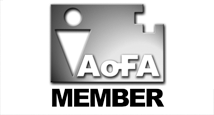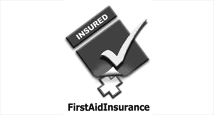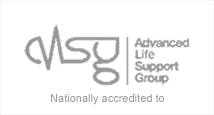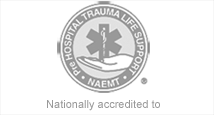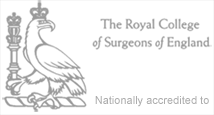News Items
- 05-Feb-2012
"ALSG approved Safe Transfer & Retrieval (STaR) course, Belfast - November 08th & 09th 2012" - 09-Oct-2011
"Survival-linX Solutions on-line Classrom & Education Centre" - 24-Sep-2011
"RIDDOR - Changes to incident reporting" - 12-Mar-2011
"Do you know what to do if a child is choking?" - 12-Mar-2011
"Anaphylaxis - recognition and management" - 12-Mar-2011
"Join use on Facebook - for all the latest discusions, first aid advice and general resuscitation information" - 12-Mar-2011
"Does your Surgery need Life Support (CPR) & Automated Defibrillator (AED) Training?" - 12-Mar-2011
"Resuscitation Council (UK) Emergency Life Support in Schools" - 04-Nov-2010
"2010 Resuscitation Guidelines - Summary of main changes" - 07-Sep-2010
"Do you have a Automated Defibrillator in your place off work?" - 24-Nov-2009
"Survival-linX Solutions gains HSENI certificate of approval to provide first aid at work (FAW) training courses." - 07-Nov-2009
"Risks of pandemic H1N1 2009 influenza (swine influenza) during cardiopulmonary resuscitation (CPR)" - 19-Oct-2008
"Are you thinking of purchasing an Automated External Defibrillator(AED) - essential infomation to assist you when choosing the correct unit." - 09-Aug-2008
"An account of the formation of the foramen ovale and how blood entering the inferior vena cava receives preferential blood streaming in the foetus." - 31-Aug-2007
"Mechanical CPR - Lund University Cardiopulmonary Assist System (LUCAS)" - 02-Jun-2003
"Significant increase in training for Health Care professionals likely to be called to assist children with trachestomy tube difficulties"
Join use on Facebook - for all the latest discusions, first aid advice and general resuscitation information
12-Mar-2011
An example of info on our Facebook wall.
Broken arms are very painful injuries and rarely life-threatening emergencies. Learn to recognise a broken arm to decide how to respond to it.
Signs and symptoms of a broken arm:
...
•pain (almost always present)
•swelling
•bruising
•deformity (arm appears out-of-place)
•numbness or tingling
•broken skin with bone visible
•limited mobility of the arm
1.Safety First! Make sure the victim is in a safe location. It is more important to worry about rescuer and victim ongoing safety than to worry about one broken arm. Follow universal precautions and wear personal protective equipment if you have it.
2.Check ABC's. Make sure the victim has an Airway, is Breathing, and has Circulation. Broken arms can be very distracting injuries. Most of the time, however, they look worse than they are.
3.Control bleeding.
4.Look for other injuries. If a victim shows signs of injury to the head, neck, or back, DO NOT move the victim.
5.Cover any broken skin with sterile dressings. If needed, the wound can be rinsed -- try to use sterile water or saline solution.
6.If an ambulance is responding, have the victim remain still and wait for the ambulance. If an ambulance is unavailable, it may be necessary to splint the broken arm. Be sure to immobilize the joints (elbow, wrist, shoulder) above and below the break. Do not wrap the arm too tight.
7.Put ice on the break to reduce swelling. Put a sheet or towel between the ice and the skin to prevent frostbite. Leave ice on for 15 minutes, then remove ice for 15 minutes.
Tips:
1.Remember, DO NOT move a victim with suspected head, neck, or back injuries unless it is to keep rescuers or victim safe.
2.DO NOT straighten a broken arm or change its position unless the victim's hand (on the arm with the break) is cold, blue, numb, or paralyzed. Only attempt to return a deformed arm to the anatomical position.
3.Call 999 for a leg broken above the knee, a broken hip, a broken pelvis, a neck or back injury, or a head injury. It is still acceptable to summon an ambulance for a broken arm, but call on the ambulance agency's non-emergency line.
4.If splinting the broken arm, make a sling to support the arm's weight and wrap a swath around the victim's torso to immobilize the broken arm.
visit www.survival-linx.com for further informationSee More
Signs and symptoms of a broken arm:
...
•pain (almost always present)
•swelling
•bruising
•deformity (arm appears out-of-place)
•numbness or tingling
•broken skin with bone visible
•limited mobility of the arm
1.Safety First! Make sure the victim is in a safe location. It is more important to worry about rescuer and victim ongoing safety than to worry about one broken arm. Follow universal precautions and wear personal protective equipment if you have it.
2.Check ABC's. Make sure the victim has an Airway, is Breathing, and has Circulation. Broken arms can be very distracting injuries. Most of the time, however, they look worse than they are.
3.Control bleeding.
4.Look for other injuries. If a victim shows signs of injury to the head, neck, or back, DO NOT move the victim.
5.Cover any broken skin with sterile dressings. If needed, the wound can be rinsed -- try to use sterile water or saline solution.
6.If an ambulance is responding, have the victim remain still and wait for the ambulance. If an ambulance is unavailable, it may be necessary to splint the broken arm. Be sure to immobilize the joints (elbow, wrist, shoulder) above and below the break. Do not wrap the arm too tight.
7.Put ice on the break to reduce swelling. Put a sheet or towel between the ice and the skin to prevent frostbite. Leave ice on for 15 minutes, then remove ice for 15 minutes.
Tips:
1.Remember, DO NOT move a victim with suspected head, neck, or back injuries unless it is to keep rescuers or victim safe.
2.DO NOT straighten a broken arm or change its position unless the victim's hand (on the arm with the break) is cold, blue, numb, or paralyzed. Only attempt to return a deformed arm to the anatomical position.
3.Call 999 for a leg broken above the knee, a broken hip, a broken pelvis, a neck or back injury, or a head injury. It is still acceptable to summon an ambulance for a broken arm, but call on the ambulance agency's non-emergency line.
4.If splinting the broken arm, make a sling to support the arm's weight and wrap a swath around the victim's torso to immobilize the broken arm.
visit www.survival-linx.com for further informationSee More
Register
To access our members content please login here.
If you do not have access please register here to access our members section. If you have forgotten your password please click here to reset your password.
If you do not have access please register here to access our members section. If you have forgotten your password please click here to reset your password.
Contact Us
| Address | PO Box 1491 Dungannon BT71 5YF |
| Telephone: | 028 8774 6864 |
| Mobile: | 079 7662 1643 |
| Email: | info@survival-linx.com |
Site last updated 14/12/2025 14:18:44


